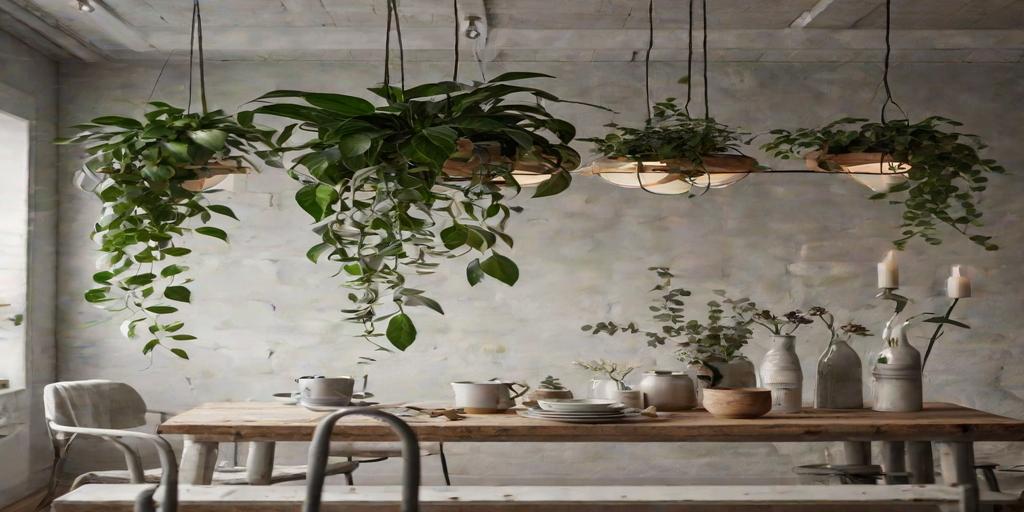
Minimalist Styling with Low Light Hanging Plants: Effortless Elegance for Any Space
Discover how to elevate your minimalist décor with low light hanging plants! Learn the best plant choices, styling tips, and care essentials for a serene, nature-inspired space.
Introduction
Minimalism meets nature in the most enchanting way—low light hanging plants! Did you know that indoor plants can boost mood and productivity by up to 15%? Whether you’re a city dweller with limited sunlight or a design enthusiast craving simplicity, these lush, trailing greens add life without clutter. In this guide, we’ll explore the best low light hanging plants, creative styling ideas, and easy-care tips to help you craft a calming, stylish oasis.
Best Low Light Hanging Plants for Minimalist Spaces
Pothos (Devil’s Ivy)
If you’re new to indoor plants or simply want something resilient, pothos is a top contender. Its heart-shaped leaves grow quickly, cascading beautifully from shelves or hanging planters. It thrives in low light and forgives the occasional missed watering. Plus, it comes in several muted color variations—like neon green, marble queen, or classic jade—making it easy to match a minimalist palette.
Philodendron Heartleaf
For an effortlessly elegant look, the philodendron heartleaf is a must. Its trailing vines and glossy, heart-shaped leaves add softness to any space without overwhelming it. Like pothos, it’s low-maintenance and adapts well to dim corners. The deep green foliage pairs perfectly with neutral decor, creating a serene, organic vibe.
Spider Plant
Not only is the spider plant adaptable to low light, but it’s also a natural air purifier—ideal for small, minimalist spaces where clean lines and fresh air matter. Its arching leaves and occasional baby “spiderettes” add subtle movement. Opt for the solid green variety for a sleeker look, or the variegated type for a touch of contrast.
String of Pearls
If you love modern, sculptural plants, the string of pearls is a standout. Its delicate, bead-like foliage drapes gracefully, adding visual interest without clutter. While it’s a succulent, it tolerates lower light better than most. Just be cautious with watering—let the soil dry completely between sessions to prevent rot.
ZZ Plant
For those who prefer structured, glossy foliage, the ZZ plant is a minimalist’s dream. Its upright, waxy leaves reflect light beautifully, making even dim spaces feel brighter. It’s nearly indestructible, thriving on neglect and requiring water only every few weeks. A single ZZ plant in a sleek pot can anchor a room with quiet sophistication.
Styling Tips for a Minimalist Aesthetic
Use Neutral Planters
Stick to understated colors like white, beige, or matte black to keep the focus on the plants’ natural beauty. Ceramic, concrete, or muted terracotta pots blend seamlessly with minimalist decor, avoiding visual competition.
Play with Heights
Layer hanging plants at different levels—some close to the ceiling, others midway—to create depth without overcrowding. A tall ZZ plant on the floor paired with a trailing pothos above adds dimension while maintaining simplicity.
Less is More
Resist the urge to fill every corner. Instead, choose 2-3 statement plants that complement each other. A spider plant near a window and a string of pearls on a floating shelf can feel intentional and uncluttered.
Natural Materials
Incorporate wood, rattan, or linen for hangers and stands. A simple macramé holder or a raw-edge wooden shelf enhances the organic feel without distracting from the plants’ simplicity.
Wall-Mounted Options
Floating shelves or minimalist hooks can elevate trailing plants like philodendrons, turning them into living wall art. This approach saves floor space and keeps the aesthetic clean.
Essential Care Tips for Low Light Hanging Plants
Water Sparingly
Overwatering is the fastest way to kill low-light plants. Let the soil dry out between waterings—stick your finger an inch deep to check. Pothos and ZZ plants prefer drier conditions, while spider plants like slightly moist (but not soggy) soil.
Rotate Occasionally
Plants in low light tend to grow toward the nearest light source. Rotate the pot every few weeks to encourage even growth and prevent lopsided vines.
Dust Leaves Gently
Dust buildup can block what little light these plants receive. Wipe leaves with a damp cloth or give them a quick shower (for non-succulents) every month to keep them efficient at photosynthesis.
Avoid Direct Sun
While “low light” doesn’t mean no light, avoid placing these plants in harsh sunlight, which can scorch leaves. North-facing windows or spots a few feet from east/west windows are ideal.
Prune Regularly
Trim leggy vines to maintain a tidy shape. For trailing plants like pothos, snip just above a leaf node to encourage bushier growth.
Creative Placement Ideas for Small Spaces
Above a Workspace
Hang a pothos or philodendron near your desk—their trailing vines add life without taking up precious surface space. Studies show greenery can boost focus and reduce stress, making this a functional and stylish choice.
In a Bathroom Corner
If your bathroom has minimal natural light, try a fern or heartleaf philodendron in a hanging planter. They’ll appreciate the humidity from showers and add a spa-like tranquility.
Kitchen Nook
No window? No problem. A ZZ plant or spider plant can thrive on a shelf or hanging hook near your coffee station or sink. For a subtle herb garden, try low-light-tolerant mint or parsley (though they’ll need occasional indirect light).
Bedroom Sanctuary
Softening sharp corners is key in a minimalist bedroom. A spider plant or string of pearls suspended near a reading nook introduces gentle movement and texture without overwhelming the space.
Entryway Statement
Greet guests with a lush but restrained display—a single ZZ plant on a console table paired with a hanging pothos above creates an inviting yet uncluttered first impression.
By selecting the right plants, styling them thoughtfully, and maintaining them with care, you can cultivate a minimalist space that feels alive and intentional—without sacrificing simplicity.
Conclusion
Minimalist styling with low light hanging plants is the perfect blend of form and function—bringing nature indoors without overwhelming your space. From the resilient pothos to the sculptural string of pearls, these plants thrive effortlessly while enhancing your décor. Ready to transform your home? Start with one or two favorites, experiment with placement, and enjoy the calming beauty of greenery. Happy planting!
